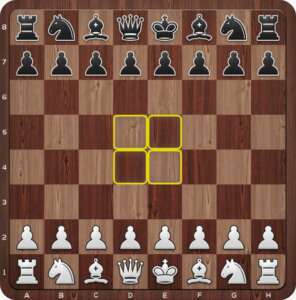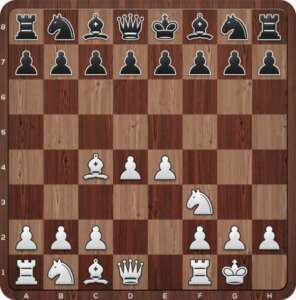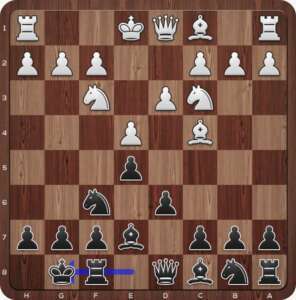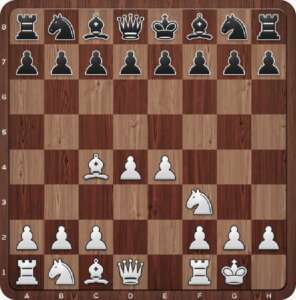
This Is a question I have pondered on since my early days as a beginner chess player right until I dropped the tag of ‘novice’. If only, I could memorize some opening moves I could crush my opponents—I thought. This sounds like the cry of many overweight people pondering on various diets and hoping for a permanent solution to their unwanted curves. Unfortunately, this is not sustainable and chess players who want to appreciate the beauty of the game strive to understand the principles of opening chess play. So, lets learn about some opening chess principles
- Center: It is often noticed that a player who controls the center dictates the trajectory of the game and can leverage their control to gain the initiative. Afterall, pieces can gain access to the furthest parts of the chess board on either flank, through the center. Hence it is of paramount importance for a player to strive to control or atleast fight for the center in the early stages of the chess game. Central control is fundamental to every chess opening!
What is the Center?
The center consists of the 4 key squares i.e e4, e5, d4 and d5. Look at any opening like the King Pawn opening or the Queens Gambit and you will notice how each of them fight for these 4 squares in the early stages of the game. It is so serious that in the Queens Gambit, white ‘gambits’ a pawn to control the entire center!

White tries to claim the center first! Look at the position below. The white side has mobilized their e and d pawns 2 steps to control the key central squares highlighted in the above diagram. Sometimes, white even pushes the c and f pawns 2 steps to control the ‘key squares’ even more. This can be seen in the “Four Pawn Attack” against the black side’s Alekhine’s defense.

You might ask- The White side has an unfair advantage as they move first so how must the Black side control the center? Well, Black systematically tries to destabilize white’s center through different opening set ups. The position below is from a King Pawn Opening where the black side adopts the Philidor Set up to undermine white’s center! Notice how black has pushed his king pawn up 2 steps and bolstered it with the d-pawn.

Remember Fundamental #1: Fight for the key central squares in the initial moves. You will prosper!
Now that you have fought for the key squares, what next?
2. Time: Speed is necessary in the game of chess and I don’t just mean the physical act of moving the chess pieces quickly, unless you are playing a game of blitz chess or are low on time. Time means develop your pieces quickly! Notice the same position as above and observe how the white side first controlled the key central squares, then developed the King’s knight and the King’s bishop on an aggressive diagonal and again targeting the central squares.

Remember Fundamental #2: Develop your minor pieces (knights and bishops), preferably your ‘King side’ pieces first.
3. King Safety: Make your king safe by castling fast, either king side or queen side. Try to secure your king before undertaking any aggressive action. Notice in the position below how the black side controls some central squares, has developed their king side pieces and has already castled. They are now ready for action!

Remember Fundamental #3: Try and castle quickly. This applies to most chess openings.
Chess players, especially in the early stages of their development must adhere to the Chess opening principles highlighted above:
- Center
- Time
- King Safety
Once you follow these principles, the next stage of the game involves strategic play based on the choice of opening and the placement of the piece on the board. But let’s not get ahead of ourselves here. Get a playable position out of the opening and then thing about “what to play for”! unless you cannot wait and want to sign up for ChessED’s Opening and Middle Game courses, taught by National Masters Eric and Dev.


